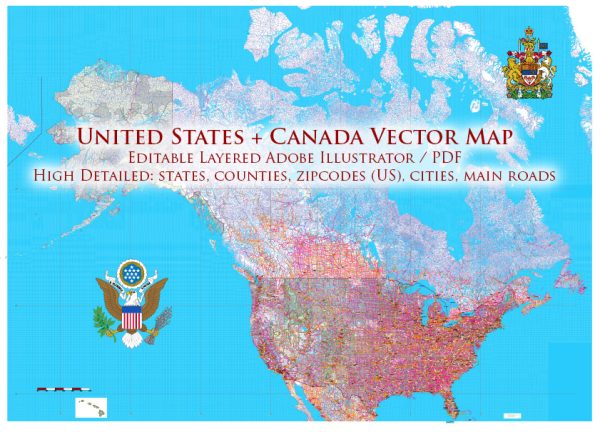The United States and Canada are two vast countries known for their remarkable biodiversity due to their diverse landscapes, climates, and ecosystems. Here’s a description of the biodiversity in both countries:
United States:
- Forests: The United States boasts a wide range of forests, including the temperate rainforests of the Pacific Northwest, the hardwood forests of the Appalachian Mountains, and the vast coniferous forests of the Rockies.
- Mountains: The country is home to several mountain ranges, such as the Rockies, Sierra Nevada, Cascades, and the Appalachians. These regions support diverse plant and animal species adapted to mountainous terrain.
- Deserts: The southwestern United States includes expansive deserts like the Sonoran and Mojave Deserts, where unique species like saguaro cacti and desert tortoises thrive.
- Grasslands: The Great Plains and prairies in the central United States are known for their grasslands, supporting bison, pronghorn, and numerous bird species.
- Wetlands: The U.S. has extensive wetland ecosystems, like the Florida Everglades and the coastal wetlands of the Gulf of Mexico, which provide habitats for countless species, including alligators, manatees, and various waterfowl.
- Coastlines: Coastal areas are rich in marine biodiversity. The Gulf of Mexico, Atlantic, and Pacific coasts are home to diverse marine life, from sea turtles to whales.
- National Parks: The United States has a robust system of national parks and protected areas, such as Yellowstone and Yosemite, which preserve unique ecosystems and wildlife.
Canada:
- Boreal Forest: Canada is known for its expansive boreal forest, which covers a significant portion of the country and is home to species like moose, black bears, and various bird species.
- Arctic Tundra: The northern regions of Canada are characterized by Arctic tundra, where polar bears, Arctic foxes, and caribou thrive in a challenging environment.
- Coastlines: Canada’s extensive coastline along the Atlantic, Pacific, and Arctic Oceans is rich in marine biodiversity, including whales, seals, and numerous seabirds.
- Lakes and Rivers: Canada is abundant in freshwater resources, with thousands of lakes and rivers. This habitat supports a variety of aquatic life, including salmon, trout, and beavers.
- Prairies: The southern regions of Canada contain prairies, supporting species like bison, pronghorn, and various grassland birds.
- Rocky Mountains: The Canadian Rockies offer diverse habitats for animals like grizzly bears, mountain goats, and marmots.
- National Parks: Canada also has a network of national parks and protected areas, including Banff and Jasper National Parks, preserving pristine ecosystems and iconic species.
Both the United States and Canada have a shared commitment to conserving their biodiversity, with many conservation organizations and initiatives in place to protect and sustain these unique ecosystems and species. The diversity in both countries offers a rich tapestry of natural life, making them important contributors to the global biodiversity picture.


 Author: Kirill Shrayber, Ph.D.
Author: Kirill Shrayber, Ph.D.